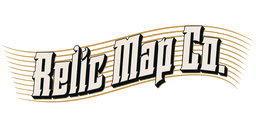1
/
of
1
The Province of Ulster Surveyed by Sir William Petty. (The Province of Ulster Surveyed by Sir William Petty. Divided Into Its Counties and the Counties Into Their Severall Barronies, Wherein Are Distinguished the Archbishopricks, Bishopricks, Citys, P...
- Regular price
-
$44.95 - Regular price
-
$64.95 - Sale price
-
$44.95
Couldn't load pickup availability
90-Day Satisfaction Guarantee & Free Returns
About This Map
Discover the timeless beauty of our fine art quality printed reproduction of this antique map. Perfect for history enthusiasts, collectors, and interior decorators.
Restored with meticulous attention to detail by our team with over a decade of experience, this stunning reproduction captures the intricate artistry and historical significance of the original map.
Whether you're a collector or seeking a unique decor piece, this archival-quality map reproduction is a timeless addition to any space. Order now to bring history to life!
Old map of Ireland, Northern Ireland, United Kingdom of Great Britain and Northern Ireland.day Northern Ireland), published in London in 1689, is based on the Down Survey of Ireland undertaken in 1656--58. As indicated in the subtitle, the map shows the counties and baronies of the province, archbishoprics, cities, roads and bridges, and the distribution of seats in parliament. Relief is shown pictorially. The map has two distance scales, Irish miles and English miles. The Down Survey was the first detailed land survey on a national scale anywhere in the world. Its purpose was to measure lands which, following the calamitous English Civil War, much of which was fought on Irish soil, were to be taken from Irish Catholic landowners and given to English Protestants, many of whom were soldiers who had fought in the war under Oliver Cromwell (1599--1658). The survey was led by Sir William Petty (1623--87), a surgeon-general in the English army. The son of a poor weaver in Hampshire, Petty worked as a cabin boy, hawker, seaman, and clothier, before rising to become a physician, professor of anatomy at Oxford, professor of music in London, inventor, landowner, and Member of Parliament. He wrote several books, including A Treatise of Taxes and Contributions (1662), Political Survey or Anatomy of Ireland (1672), and Five Essays in Political Arithmetick (1687), in which, drawing in part on his work with the land survey, he arrived at profoundly original conclusions about labor, employment, wages, rents, the price of land, and money. For these insights he was called, by Karl Marx and others, the "father of political economy." By gathering detailed statistics on prices, production, and other economic variables, Petty also pioneered the use of empiricism in economics. Because all of its results were "set down" in maps, Petty referred to the survey of Ireland as the Down Survey.
Created by William Berry, William Petty in 1689.
- Title devised, in English, by Library staff.
- "Scale 1:500,000"--Note extracted from World Digital Library.
- Original resource extent: 1 map : black-and-white ; 40 x 55 centimeters.
- Original resource at: University of Wisconsin-Milwaukee Libraries.
- Content in English.
- Description based on data extracted from World Digital Library, which may be extracted from partner institutions.
Map Subjects
Administrative And Political Divisions
Ireland
Islands
Northern Ireland
United Kingdom Of Great Britain And Northern Ireland
William Berry
William Petty
1689
Map Tags
1689
Administrative And Political Divisions
Ireland
Islands
Map
Northern Ireland
United Kingdom Of Great Britain And Northern Ireland
William Berry
William Petty
Secure Checkout
Lifetime Warranty
Money-Back Guarantee

Map Sizing Information
- For the best legibility, order your map in the original size or larger. Most maps have intricate detail and small text that is best appreciated when the print size hasn't been reduced.
- Sizes labeled "Fits a Standard Frame" will drop right into any frame that you purchase in that size. The sizes that we offer are commonly available online and at most retail stores.
- Our standard sizes are recommendations based on the aspect ratio of the original map, but still may require some added "white space" in one dimension to fit.
- Non-standard sizes will require custom framing, and we suggest taking your print to the frame shop of your choice after you receive it for the best results.
- Custom sizes are available, simply contact us for a quote.
Below is an approximation of the scale of a few standard sizes, and how they might appear in your space.





